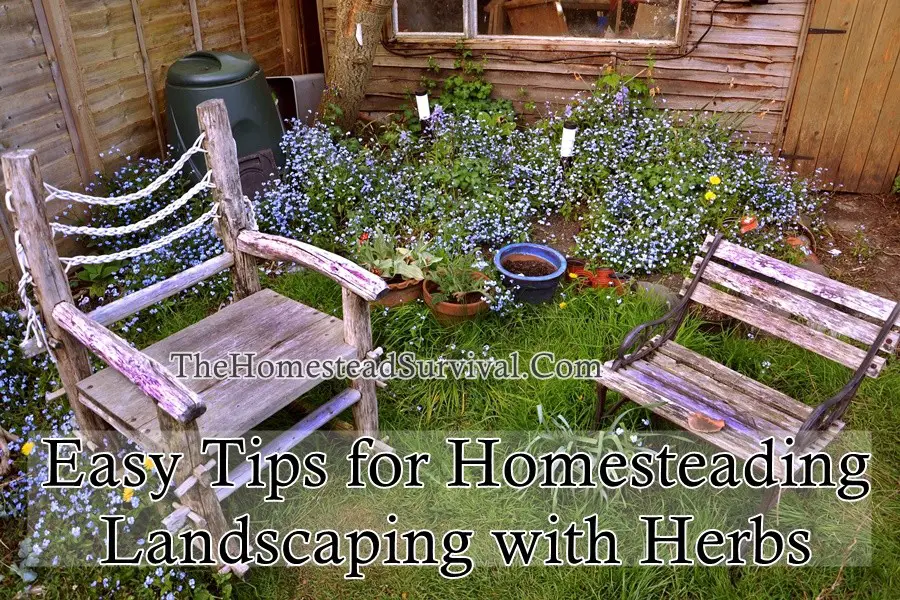These easy tips for homesteading landscaping with herbs will add beauty as well as serve as a functional fresh herb source.
It seems like when it comes to homesteading landscaping, herbs are often overlooked by many gardeners.These modest and simple plants remain in the shadow of the immense variety of colorful flowers, shrubs and trees. In reality, herbs offer wide range of options for your landscape – you can use them in both wild-looking and formal gardens, add them to vegetable and flower borders or among low-growing evergreens. They can easily fit into any color palette and turn into a great addition to every garden design. However, there are certain things you need to take into account when using herbs in your landscape.
Sponsored Links
Types of Herbs
Just like other garden plants, herbs can also be annual, perennial or biennial. You need to carefully consider the growing season of the greenery, if you plan to use it in your landscape.
Annual Herbs:
These herbs grow for only one season and should be re-planted each spring.
* chamomile
* bail
* dill
* cumin
* fennel
* cilantro
Perennial Herbs
Perennial plants may live for several years. Although their foliage dies in the fall, they grow back the next spring. Some perennials will not survive in certain environment. Check if your location is suitable for these herbs.
* rosemary
* chives
* tarragon
* lavender
* thyme
* oregano
* lemon balm
* mint
* lemongrass
* catnip
* marjoram
* sage
Biennial Herbs
There are few biennial herbs, among which is parsley. Unless you want to harvest their seed, you can treat biennial plants as annuals.
Picking the Right Herbs
Herbs can be divided into two main categories depending on the way you use them- as background or as accents. Neutral plants like French thyme, Greek oregano, sweet marjoram, winter savory, tarragon, fall into the first group and work great as complements to brighter flowers. Herbs in unusual shades and size make amazing accent plants. Such greenery is common chives with its lavender flowers and grass-like foliage or society garlic with strappy leaves and tall stalks with purple flowers.
Herb Garden Design
Basically you can choose between a conventional or more versatile approach. Create a traditional herb garden with two intersecting paths at the center. Divide the area into sections with different groups of herbs depending on their characteristics such as medicinal herbs, culinary herbs or aromatic herbs. Grow plants with similar requirements and growing periods together for easier garden maintenance and harvesting. Decorate the center intersection with more attractive plants to create a focal point. The paths can be edged by using bricks, stone, landscaping edging or woody herbs like lavender.
If you don’t have enough space or you simply want to use herbs as a complementary element to your homestead garden, you can mix them with flowers and vegetables. Some of this greenery are pest- repelling and can be beneficial for your garden life. For example, catnip repels aphids, flea beetles, weevils, squash bugs and Colorado potato beetle. Companion planting is a common practice in organic gardening. Be sure that your herbs go well with the rest of your planting and are not shadowed or suffocated by them.
Incorporating herbs into your homestead landscape will not only add beauty and diversity to your garden, but it will also have positive impact on the rest of your plant life.
You May Also Be Interested In…


